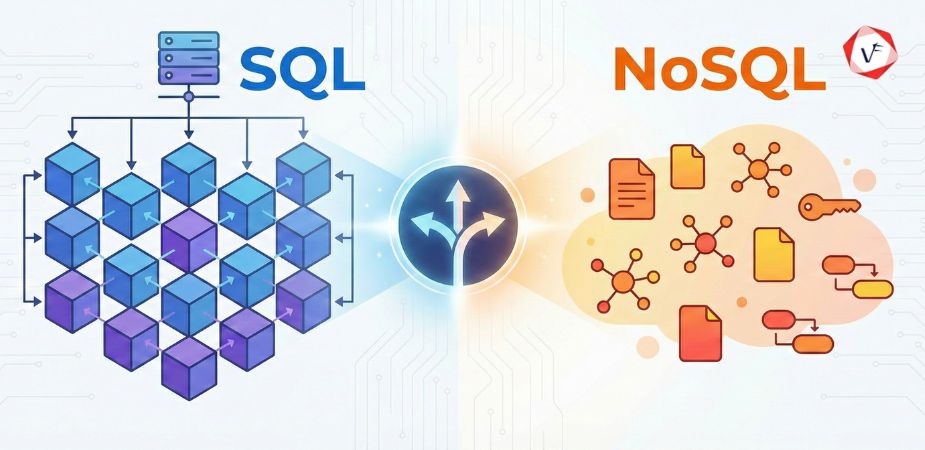- August 08, 2025 12:08 pm
- by Kevin
- August 08, 2025 12:08 pm
- by Sooraj

Cyber forensics, also known as digital forensics, is a critical field within cybersecurity that focuses on the identification, preservation, analysis, and presentation of digital evidence. In today’s interconnected world, cyber forensics has become indispensable for investigating cyber crimes, data breaches, and other security incidents. The domain of cyber forensics encompasses a variety of techniques and processes that are applied to recover and examine data from digital devices, ensuring that evidence remains admissible in legal proceedings and is preserved in its most authentic form.
Cyber forensics relies on several core components and methodologies that are crucial for ensuring the integrity of digital evidence. Key aspects include:
Data Acquisition & Preservation: The first step in cyber forensics is data acquisition, which involves safely extracting digital evidence from computers, mobile devices, and network systems. Evidence preservation techniques are critical to maintain the original state of the data, ensuring that any analysis is based on unaltered information. Digital evidence must be handled with extreme care to avoid contamination or modification.
Analysis & Examination: Once the data is acquired, forensic experts employ a variety of analytical techniques to examine the digital evidence. This phase involves decrypting encrypted files, analyzing log files, and reconstructing timelines to understand the sequence of events. Cyber forensics uses specialized software and hardware tools to extract hidden or deleted files, recover corrupted data, and identify traces of unauthorized access. This in-depth analysis is essential for both cybercrime investigation and data breach analysis.
Reporting & Presentation: After analysis, the findings are compiled into detailed reports that outline the methods used, the evidence collected, and the conclusions reached. These reports must be clear, comprehensive, and legally sound, as they may be used in court proceedings. Effective evidence preservation and meticulous documentation are crucial to ensure that the report withstands legal scrutiny. The presentation of digital evidence is a critical aspect of cyber forensics, as it can determine the outcome of legal cases and influence policy decisions in cybersecurity.
Incident Response: Cyber forensics plays a pivotal role in incident response. In cases of cyber attacks or data breaches, forensic teams work alongside incident response teams to quickly assess the extent of the damage, determine the source of the breach, and implement measures to prevent further incidents. Rapid and accurate cyber forensics can significantly mitigate the impact of a cyber incident, safeguarding both organizational assets and sensitive information.
Cyber forensics employs a variety of techniques that are integral to uncovering and analyzing digital evidence. These methods include:
File Carving & Data Recovery: File carving is used to recover files without relying on file system metadata. This technique is particularly useful when dealing with fragmented data, where traditional methods may fail. Data recovery processes ensure that no digital evidence is lost during the acquisition phase, making them essential for comprehensive cyber forensics investigations.
Network Forensics: Network forensics involves monitoring and analyzing network traffic to detect suspicious activities. By capturing and scrutinizing data packets, forensic experts can identify patterns indicative of a cyber attack. Network forensics is crucial in cybercrime investigations and incident response, as it provides insights into how an attacker infiltrated the system and what data may have been compromised.
Malware Analysis: The investigation of malicious software is a core component of cyber forensics. Malware analysis involves reverse-engineering software to understand its functionality, origins, and potential impact. This technique is often used in cybersecurity to not only detect malware but also to develop strategies for malware removal and prevention. Cyber forensics experts use malware analysis to trace the source of infections and to gather evidence for legal proceedings.
Log Analysis: Digital forensic experts scrutinize system and network logs to reconstruct events leading up to a cyber incident. Log analysis provides a timeline of actions performed on a device or network, helping investigators identify unauthorized activities. This method is particularly effective in cyber forensics, as it can reveal the sequence of events during a cybercrime investigation and support the chain of custody for digital evidence.
Memory Forensics: Memory forensics examines volatile data stored in a computer’s RAM. This technique is vital when investigating sophisticated cyber attacks that employ anti-forensic measures to hide their tracks. Memory analysis can reveal active processes, running applications, and encryption keys, which are often not available through traditional storage analysis. Cyber forensics experts rely on memory forensics to uncover hidden information that may be critical in a cyber investigation.
The practical application of cyber forensics can be seen in various high-profile cybercrime investigations and data breach analyses. For instance, in cases of ransomware attacks, cyber forensics teams are tasked with dissecting the malware, identifying the point of entry, and determining how the attack spread across a network. By employing techniques such as file carving, network forensics, and malware analysis, experts can often recover critical data and develop strategies to prevent future attacks.
Another area where cyber forensics proves invaluable is in corporate cybersecurity. Businesses frequently face threats from sophisticated cyber criminals who attempt to steal sensitive information. In these cases, cyber forensics is used not only for reactive investigations after a breach but also for proactive measures. Regular cyber forensics audits and vulnerability assessments help organizations bolster their cybersecurity defenses and minimize the risk of data breaches. Digital forensics and cyber investigation strategies ensure that any suspicious activity is quickly detected and addressed.
In government agencies and law enforcement, cyber forensics is the backbone of digital evidence analysis. Numerous cybercrime investigations have relied on the expertise of cyber forensics professionals to track down perpetrators, gather admissible evidence, and support successful prosecutions. The ability to accurately reconstruct digital events is paramount in these investigations, and cyber forensics provides the necessary tools and methodologies to achieve this. The field continues to evolve, integrating new technologies such as artificial intelligence to further enhance the capabilities of digital forensics.
Cyber forensics is not solely about solving crimes—it also plays a crucial role in strengthening cybersecurity frameworks. By analyzing data breaches and security incidents, forensic experts can identify vulnerabilities and develop strategies to mitigate risks. This proactive approach to cybersecurity helps organizations understand their threat landscape and implement preventive measures. Cyber forensics feeds directly into incident response planning, ensuring that systems are better prepared to detect, respond to, and recover from cyber attacks.
Furthermore, cyber forensics contributes to the development of security policies and best practices. The insights gained from forensic investigations inform training programs, enhance awareness of emerging threats, and support the creation of robust cybersecurity strategies. Organizations that invest in digital forensics not only improve their incident response capabilities but also fortify their overall cybersecurity posture. Through continuous monitoring and forensic analysis, companies can adapt to ever-changing cyber threats and maintain resilient defenses.
The field of cyber forensics is highly specialized, and the demand for trained professionals continues to grow. Educational institutions and professional organizations now offer a range of certifications and training programs in digital forensics and cyber forensics. Certifications such as Certified Computer Examiner (CCE), Certified Forensic Computer Examiner (CFCE), and the GIAC Certified Forensic Analyst (GCFA) have become essential for professionals seeking to advance their careers in this domain.
Investing in cyber forensics training not only benefits individual professionals but also contributes to the overall strength of a country’s cybersecurity infrastructure. Organizations are increasingly prioritizing the recruitment of skilled digital forensic experts who can navigate the complexities of cyber investigations and data breach analysis. The future workforce in cyber forensics will be well-versed in both traditional forensic methodologies and the latest innovations in artificial intelligence and cloud forensics, ensuring that they are equipped to face the challenges of tomorrow.
Cyber forensics is inherently interdisciplinary, drawing on knowledge from computer science, law enforcement, psychology, and even sociology. The interdisciplinary approach ensures that forensic experts are not only technically proficient but also understand the broader context of cyber crimes and their impact on society. This comprehensive perspective is crucial when dealing with complex cyber incidents, where motivations, methods, and outcomes can vary widely. Cyber forensics integrates analytical rigor with practical investigative skills, making it an indispensable part of modern cybersecurity and digital investigations.
By fostering collaboration among professionals from diverse backgrounds, cyber forensics has evolved into a dynamic field that continuously adapts to emerging cyber threats. The integration of interdisciplinary research helps in developing innovative solutions that enhance evidence preservation, incident response, and overall forensic analysis. This collaborative spirit is at the heart of cyber forensics, reinforcing its position as a cornerstone of effective cybersecurity strategies and cybercrime investigations.
In summary, cyber forensics is a multifaceted discipline that plays a crucial role in cybersecurity, digital investigations, and cybercrime investigations. It encompasses everything from data acquisition and evidence preservation to detailed forensic analysis and incident response. Cyber forensics continues to evolve with technological advancements, addressing challenges like encryption, mobile device analysis, and cloud forensics. Organizations and governments alike rely on cyber forensics to protect sensitive information and ensure justice. Vofox, one of the bestcybersecurity service providerin India is a great option for businesses looking to integrate innovative digital solutions into their cybersecurity strategy. Feel free to get in touch with our cybersecurity experts today.
Guaranteed Response within One Business Day!

What is Digital Twin Technology?

What are WebAssembly (WASM) Applications?
Code Review Best Practices: Complete Guide for 2026

Database Selection Guide: SQL vs NoSQL
AI Agents in Enterprise Software: How Autonomous AI is Transforming Business Operations